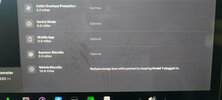Yesterday I finally took delivery of my 2023 MYLR. The battery had 87% charge at delivery and lost about 20% on the 35 mike drive home.
Charged for the first time last night (80%) with the Tesla Mobile Charger 14-50 outlet.
Was originally charging at 32amps/7kWh, but noticed that things seemed a bit warm. I reduced charging to 20amps and checked conditions about 20 mins later and found the following:
Breaker in panel at 102F
14-50 outlet plate 108F
14-50 plug 114F
Charger 127 (back of charger)
Cable from charger to car 102F
Drove 30 miles to work this morning and went from 80% to 70%. Drove a few miles to grab lunch and now vehicle is at 62%.
Sentry mode is off. Midway through the day I turned cabin overheat protection to on without AC (was previously set to on).
Currently the battery is at 62% and states 203 miles range. But if I’m getting 30 miles per 10% of usage, this would mean that I’d have about 180 miles, right?
Do the miles and battery usage seem right?
Do the breaker, outlet, plug, charger, and cable temps seem high? Everything I read is warm is okay, hot is not. But warm and hot are subjective. Any help/advice is greatly appreciated.
Charged for the first time last night (80%) with the Tesla Mobile Charger 14-50 outlet.
Was originally charging at 32amps/7kWh, but noticed that things seemed a bit warm. I reduced charging to 20amps and checked conditions about 20 mins later and found the following:
Breaker in panel at 102F
14-50 outlet plate 108F
14-50 plug 114F
Charger 127 (back of charger)
Cable from charger to car 102F
Drove 30 miles to work this morning and went from 80% to 70%. Drove a few miles to grab lunch and now vehicle is at 62%.
Sentry mode is off. Midway through the day I turned cabin overheat protection to on without AC (was previously set to on).
Currently the battery is at 62% and states 203 miles range. But if I’m getting 30 miles per 10% of usage, this would mean that I’d have about 180 miles, right?
Do the miles and battery usage seem right?
Do the breaker, outlet, plug, charger, and cable temps seem high? Everything I read is warm is okay, hot is not. But warm and hot are subjective. Any help/advice is greatly appreciated.



